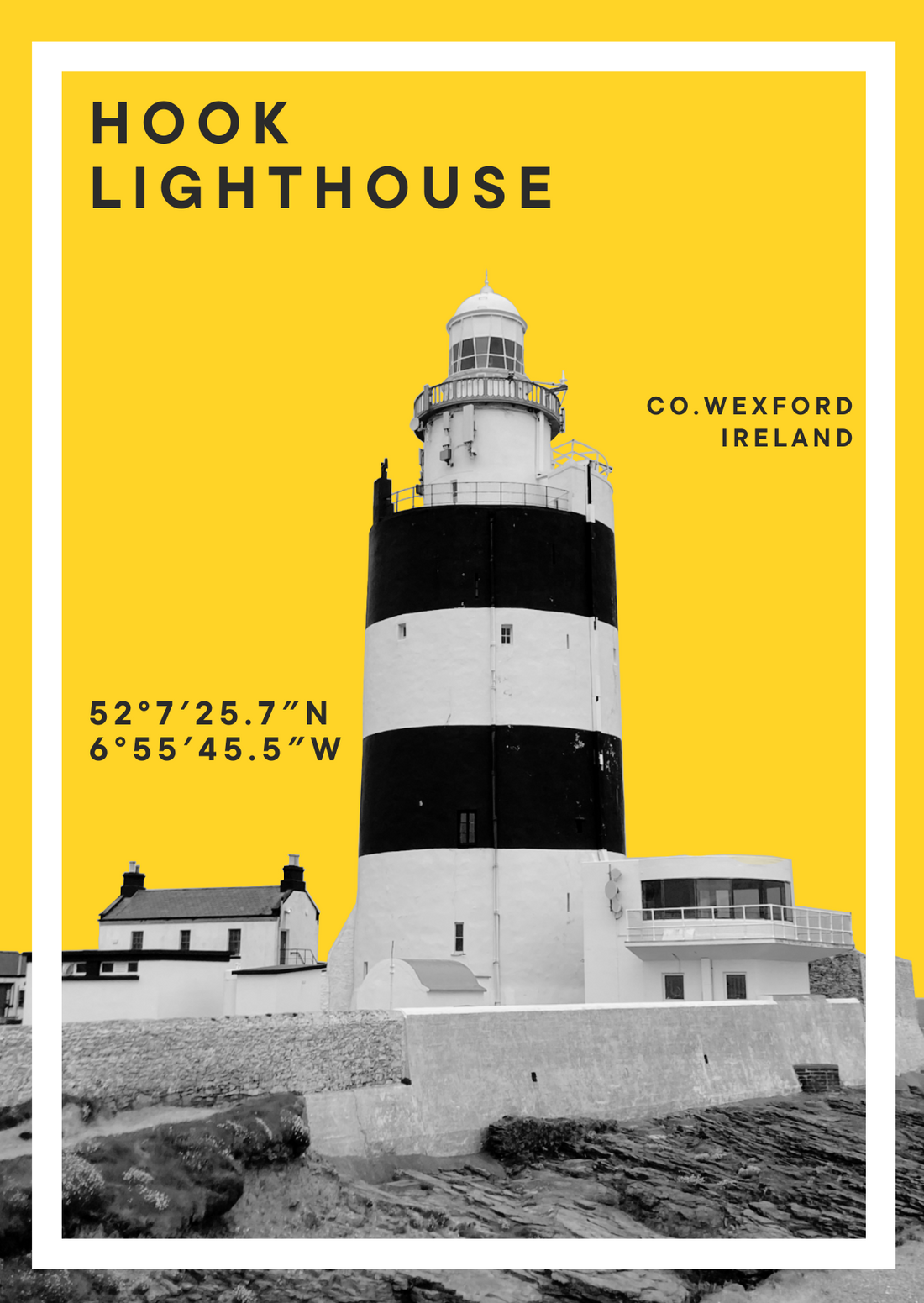
Hook Lighthouse, Co. Wexford
Hook as it is today has stood its ground for over 800 years on the peninsula in County Wexford. The history of the lighthouse goes back even further to the 6th century when St Dubhán, a Welsh monk, established a monastery on this point and with it a beacon to guide sailors along the coast.
The peninsula became known as Rinn Dubhán or Point of Dubhan. Funny enough, there is a word in Irish very similar to the monk’s name - dubán or duáin - which translates to fishing hook. After the Anglo-Norman invasion, Dubhán became (Point of) Hook.
The peninsula became known as Rinn Dubhán or Point of Dubhan. Funny enough, there is a word in Irish very similar to the monk’s name - dubán or duáin - which translates to fishing hook. After the Anglo-Norman invasion, Dubhán became (Point of) Hook.

Hook Head in the West of County Wexford; Source: irelandxo
In the 13th century, the beacon was replaced by a lighthouse to guide ships in to the growing town of New Ross, back then Leinster’s principal port. The lighthouse construction happened under the rule of William Marshal, 1st Earl of Pembroke, and son in law of Richard de Clare (Strongbow) who played an important part in the Norman invasion of Ireland in the 12th century. In Marshal’s “empire in the Southeast of Ireland” he also founded Tintern Abbey and was involved in the development of the town of New Ross, as well as Kilkenny, which was the capital of Norman Leinster.
The monks in the nearby monastery operated the lighthouse and were the first light-keepers of Hook. The monks tended to the fire at Hook Lighthouse for a few hundred years until the middle of the 17th century, when the monks abandoned the lighthouse. In 1671 a coal-burning lantern was installed on top of the tower.

Hook Lighthouse in 1685; Source: Irisharcheology.ie
Modernity was creeping in and its ever more magical inventions led to relatively quick changes in the lighthouse’s technology:
In 1791 the coal fire was replaced by a whale oil-lantern, until 1871 when gas lights were installed. 1911 the gas lights were abandoned for paraffin oil, and a clockwork mechanism changed the light from fixed to flashing, which had to be manually wound up every 25 minutes! In 1972 electricity got installed, and in 1996 Hook became fully automatic and thus there was no need any longer for a lighthouse keeper.

Source: Curious Ireland
Today, the lighthouse is remotely controlled by Commissioners of Irish lights in Dun Laoghaire.
To this day, the tower is fully intact and a prime example of medieval architecture in Ireland. The tower measures 46 metres in height, has four stories with 4 metre thick walls and was built with local limestone.
The Lighthouse is open to the public with guided tours and visitor centre, as well as a little café to enjoy the view!
To end with a little fun fact:
The phrase “By Hook or by Crook”, originates from Oliver Cromwell who is said to have vowed to take Waterford either by Hook, from the Wexford side, or by Crooke, a town on the Waterford side.
The phrase “By Hook or by Crook”, originates from Oliver Cromwell who is said to have vowed to take Waterford either by Hook, from the Wexford side, or by Crooke, a town on the Waterford side.
